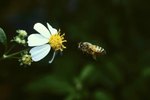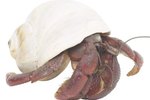The Red harvester ant, Pogonomyrmex barbatus, is fairly common throughout the Southwest United States. It eats seeds and dead insects. This ant is not considered to be a pest for it does not invade homes. This species of ant is commonly used in ant farms and is not too picky about its soil. These ants are accustomed to the sandy loam of the desert.
The Best Soil
The best soil to use is the soil the ants are collected from. Ants do adapt faster to home soil. This is soil that they have claimed by marking it with pheromones. Take a shovel with you when collecting your ants and put a few shovels of dirt from around the nest into a bucket. Sift the soil using a sieve before placing it into the ant farm so the dirt fits.
Make Loam
If you can not collect the dirt the ants are from then make loam. Take some back yard soil and mix it with sand. Sift out all the rocks and debris so it can be placed into the farm. This type of mix will be more close to what Red Harvester ants are accustomed to. It will stay moist longer so tunnels will not collapse. This mix makes the tunnels a bit stiffer for ant tunnels. It's sturdier than pure sand which tends to dry out faster.
Pure Sand
Pure sand is for the person who wants an ant farm and does not want to put a lot of effort into the soil. Sand is good for all species of ants and Red Harvesters especially have no problem adapting to it since it is part of their natural habitat. Very fine sand is commonly used in ant farms because it's easy to place. This sand is used in sand blasting and can be purchased from hardware stores for about $5 (as of December 2009). The disadvantage to using just sand is that it will dry out faster and the ant tunnels will collapse easier. If you do not put in any water the top 2 or 3 inches will begin to dry out within a week. With sand there is no sifting. You just have to fill the ant farm and dampen the sand and then keep the sand moist so the ants can tunnel.
Gel
A fad among ant farm collectors is to use a clear gel instead of sand or dirt. This gel makes ant farming maintenance free for there is no clean up necessary nor feeding involved. Sand and dirt requires you to remove uneaten food to keep the farm clean, while the gel medium provides the ants a place to dig, eat and get water all at once. It allows for more digging space and a translucent environment. This gel was used for a 2003 space shuttle project so ant tunneling could be studied in zero gravity. The ants used in the project happened to be Red Harvesters.
A gel ant farm does have its limitations. You have to buy it as is, so you can not make your own ant farm. There is no replacement gel available so once the gel is used up that’s it. Also ants adapt to the sand and dirt mediums quicker for it is more natural and therefore will start making tunnels quicker.
References
Writer Bio
Vern Hee started writing professionally in 2009. He works as a reporter for the "Pahrump Valley Times." Hee taught elementary school for eight years and worked in the landscape construction field for 20 years. Hee holds a Bachelor of Arts from the University of California Berkeley and is a veteran of the United States Navy.




